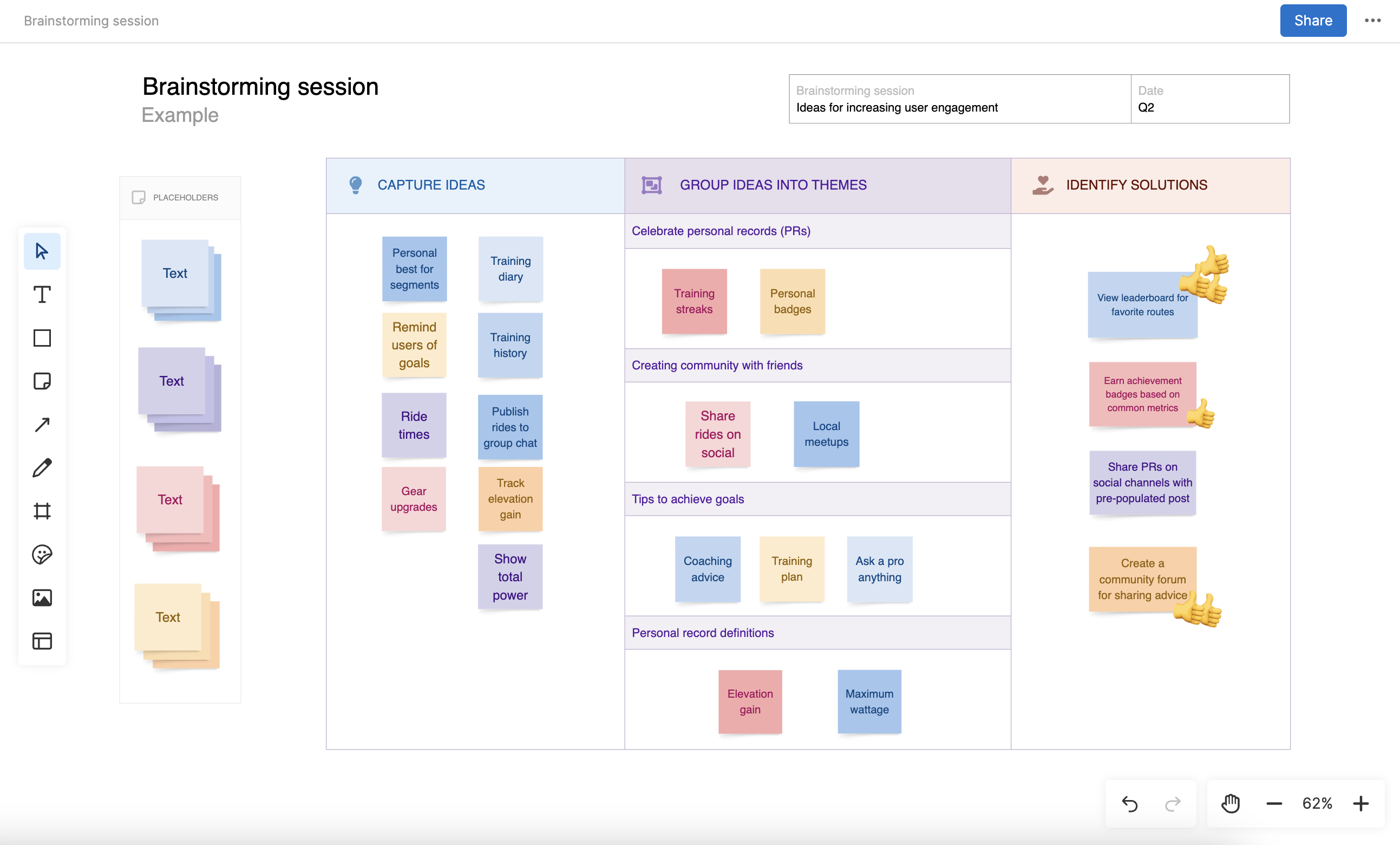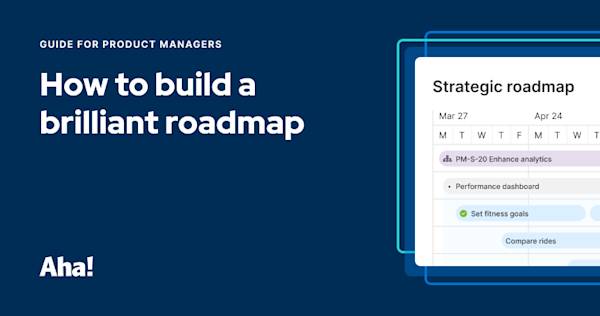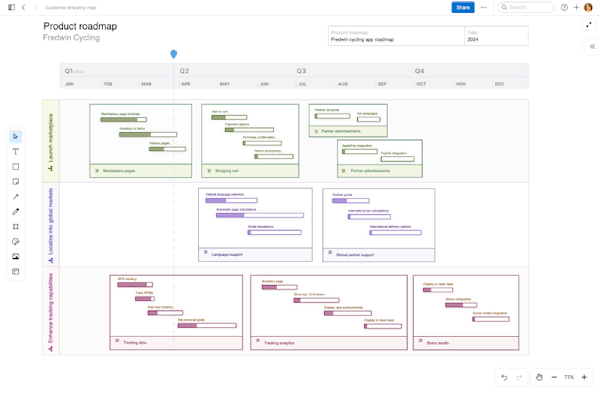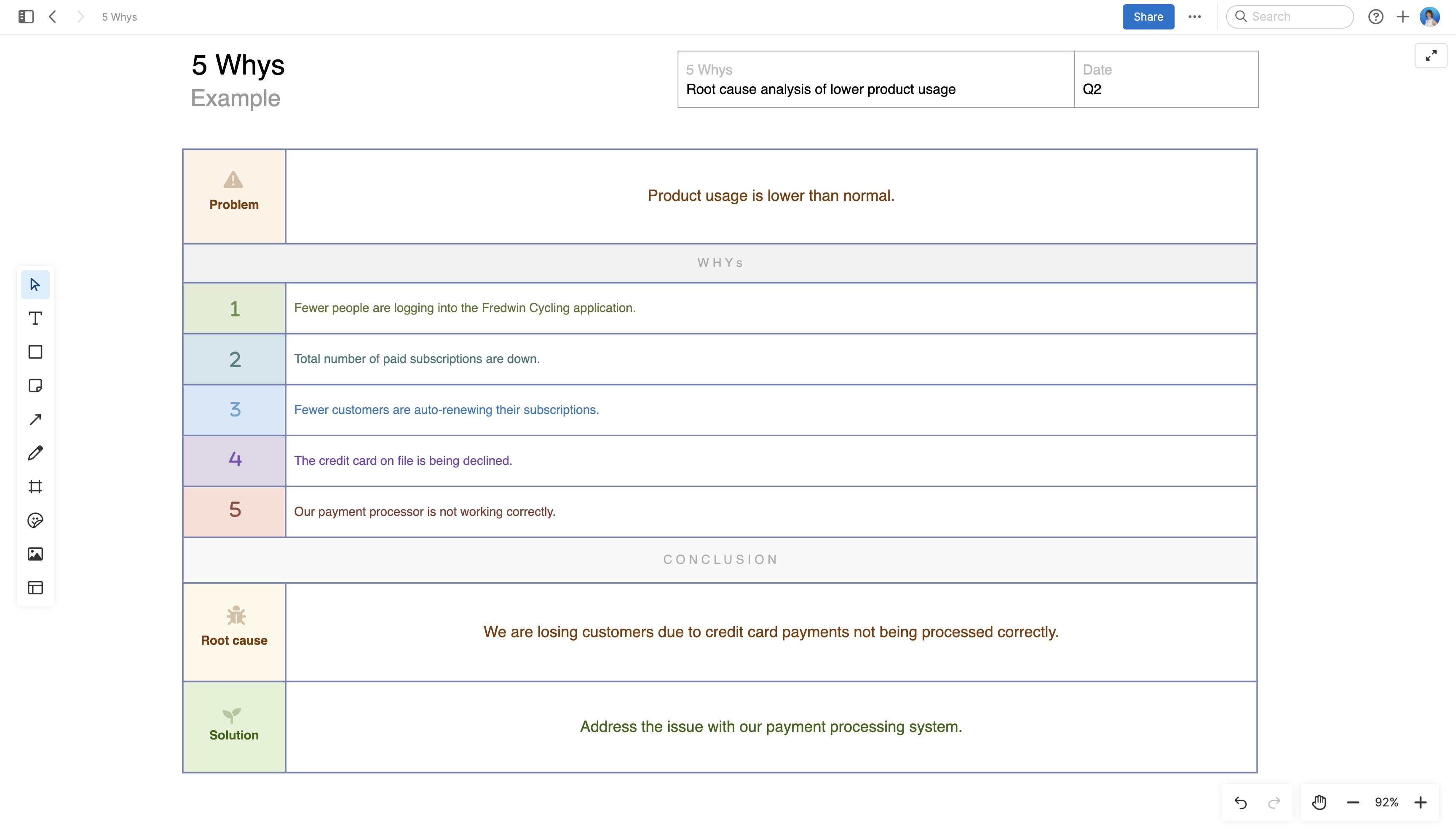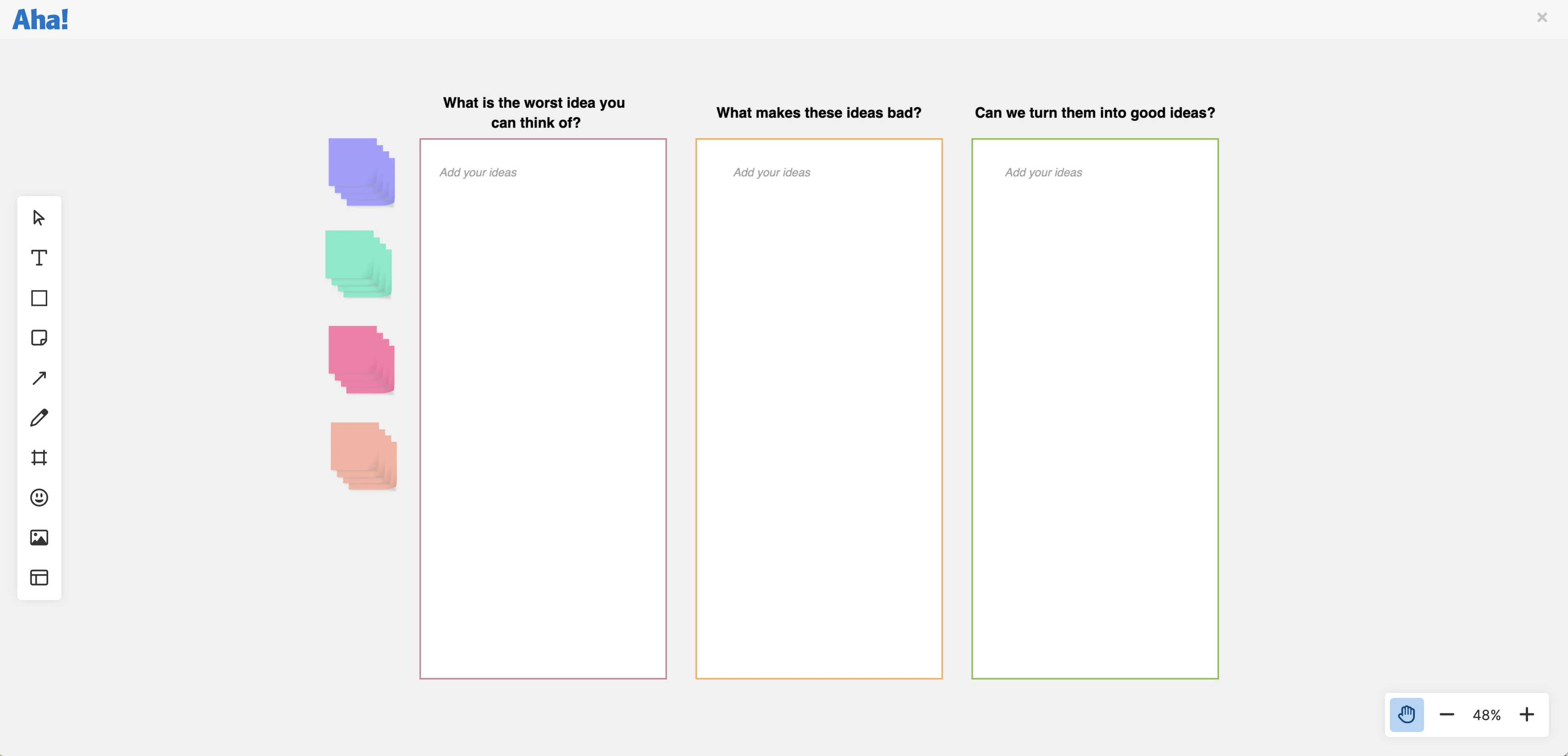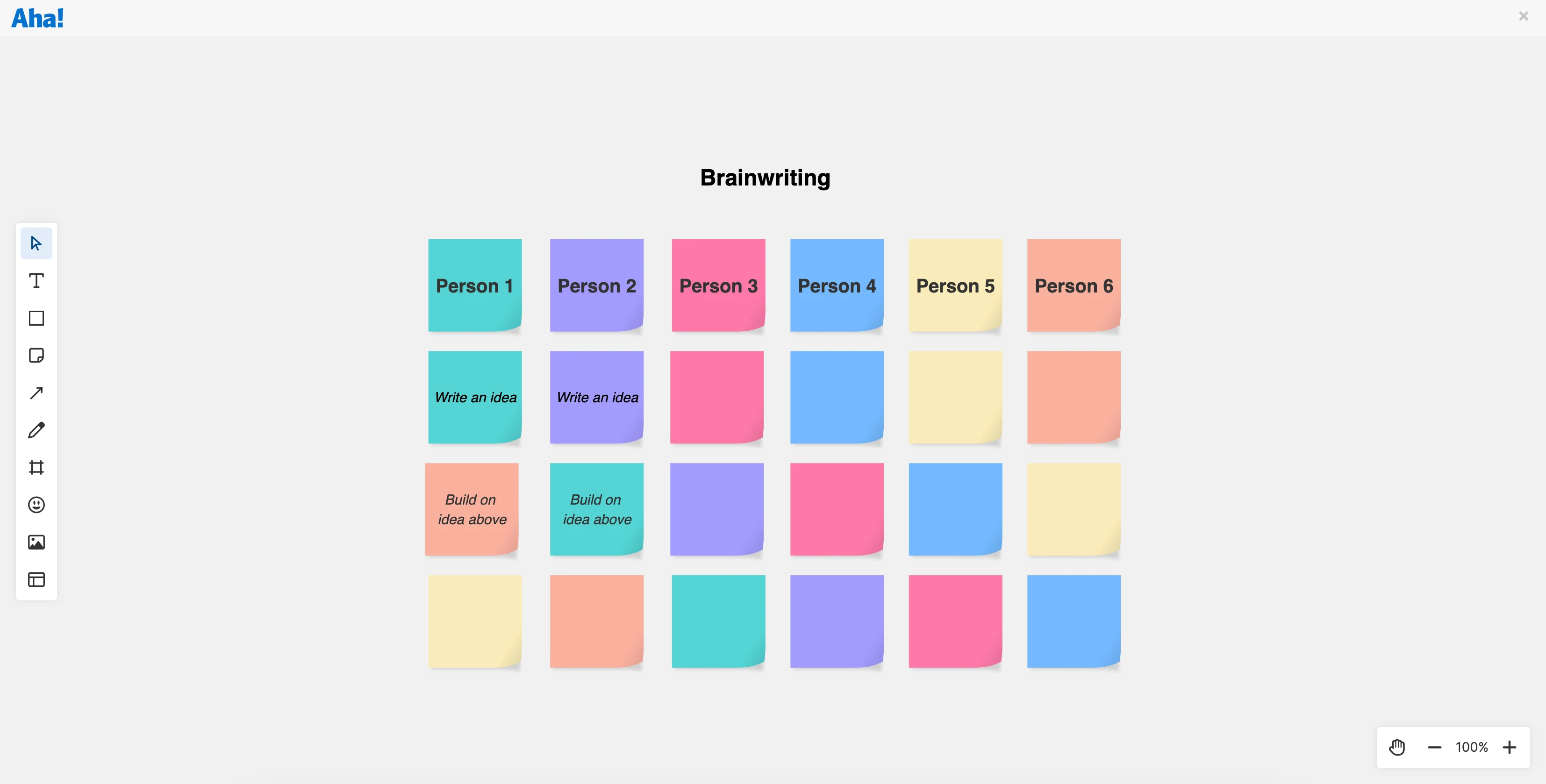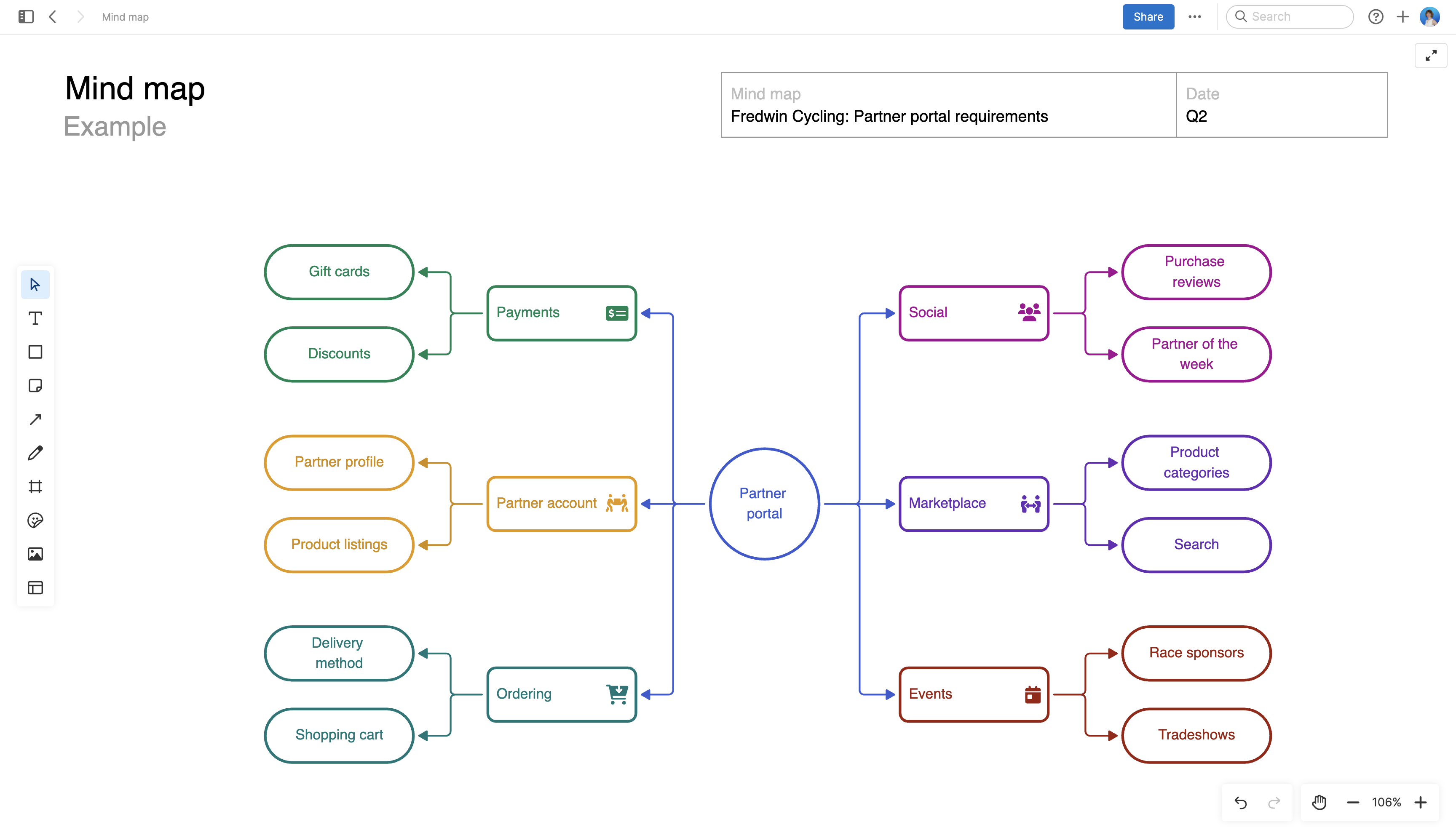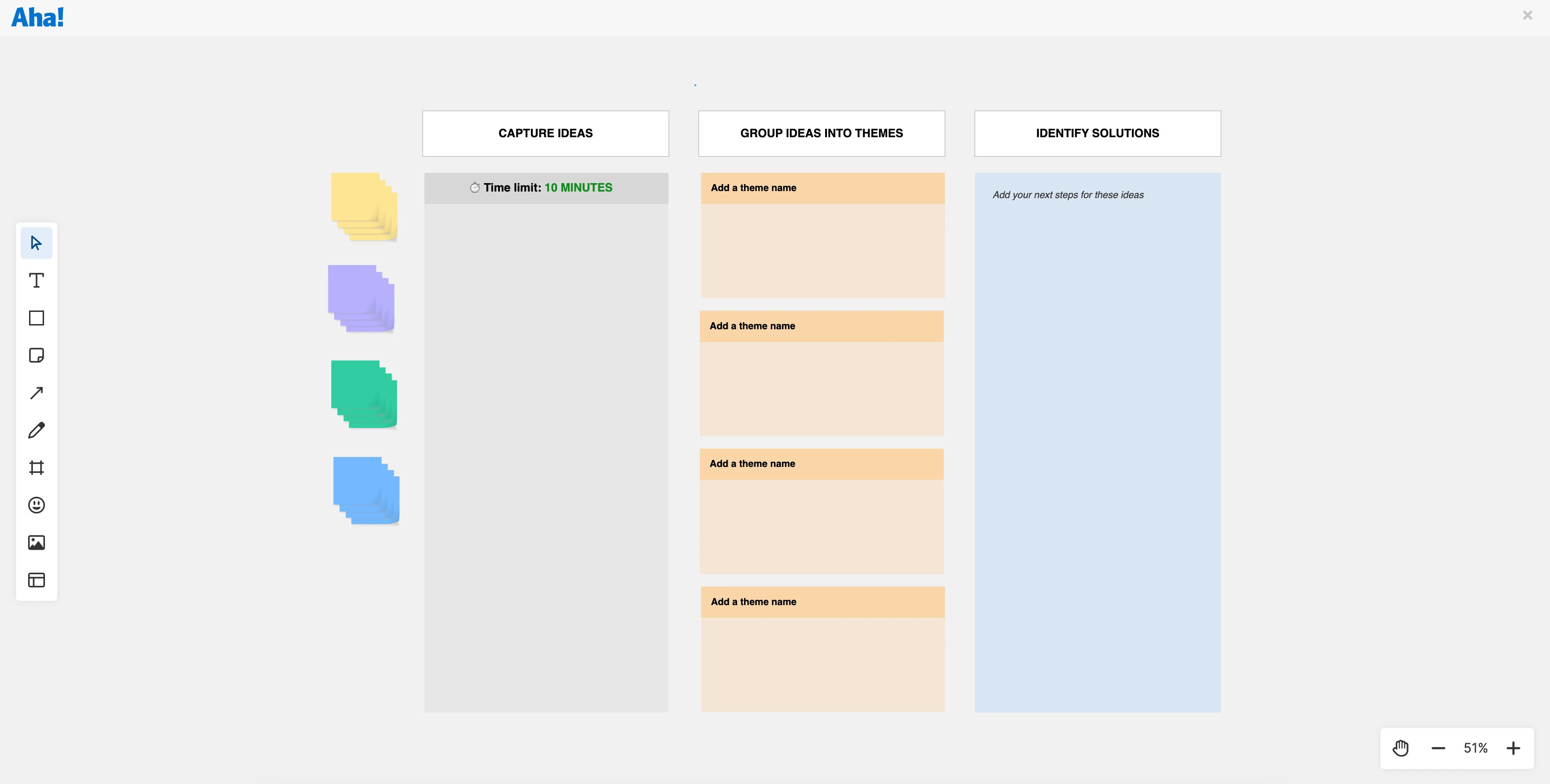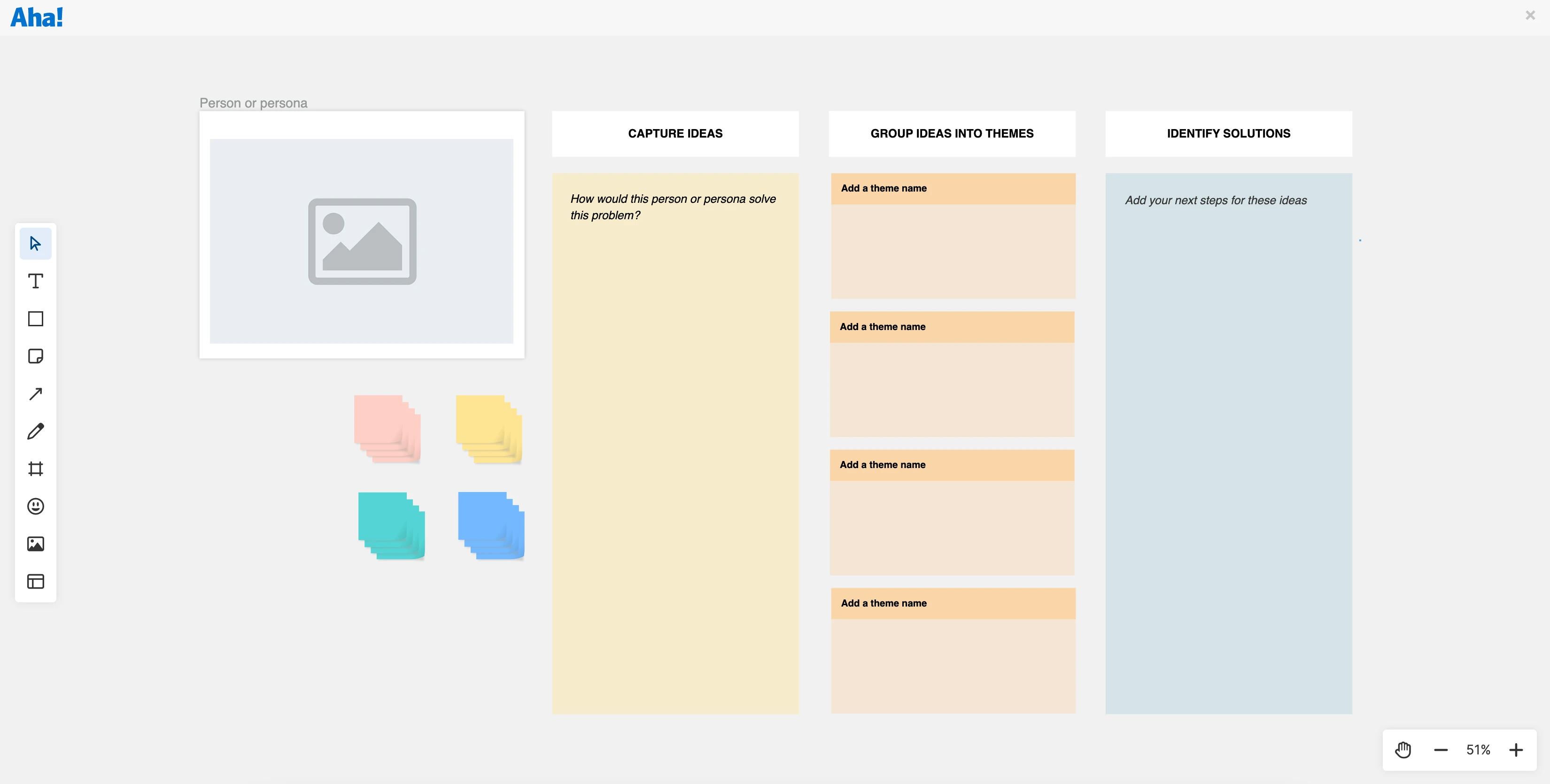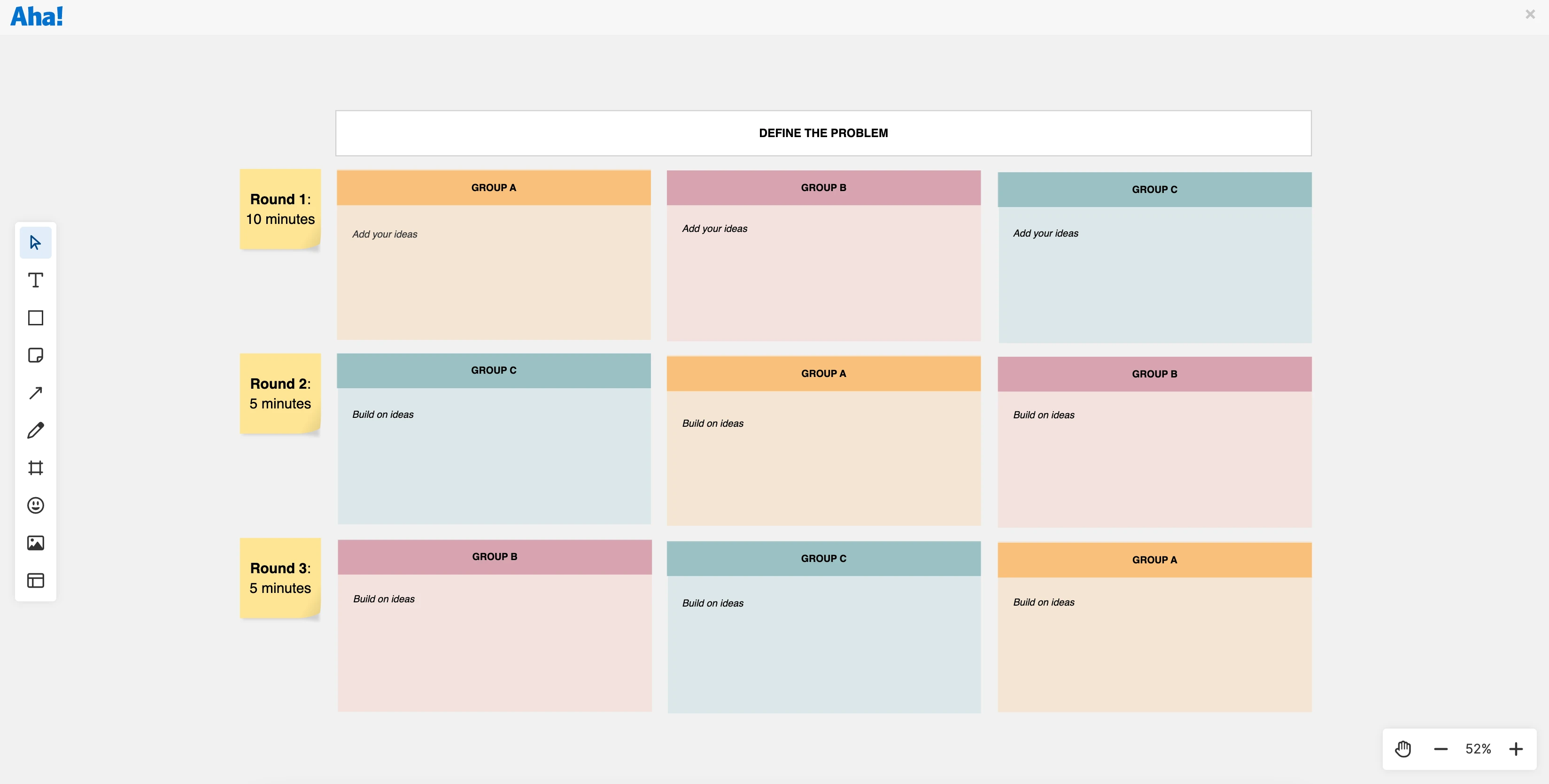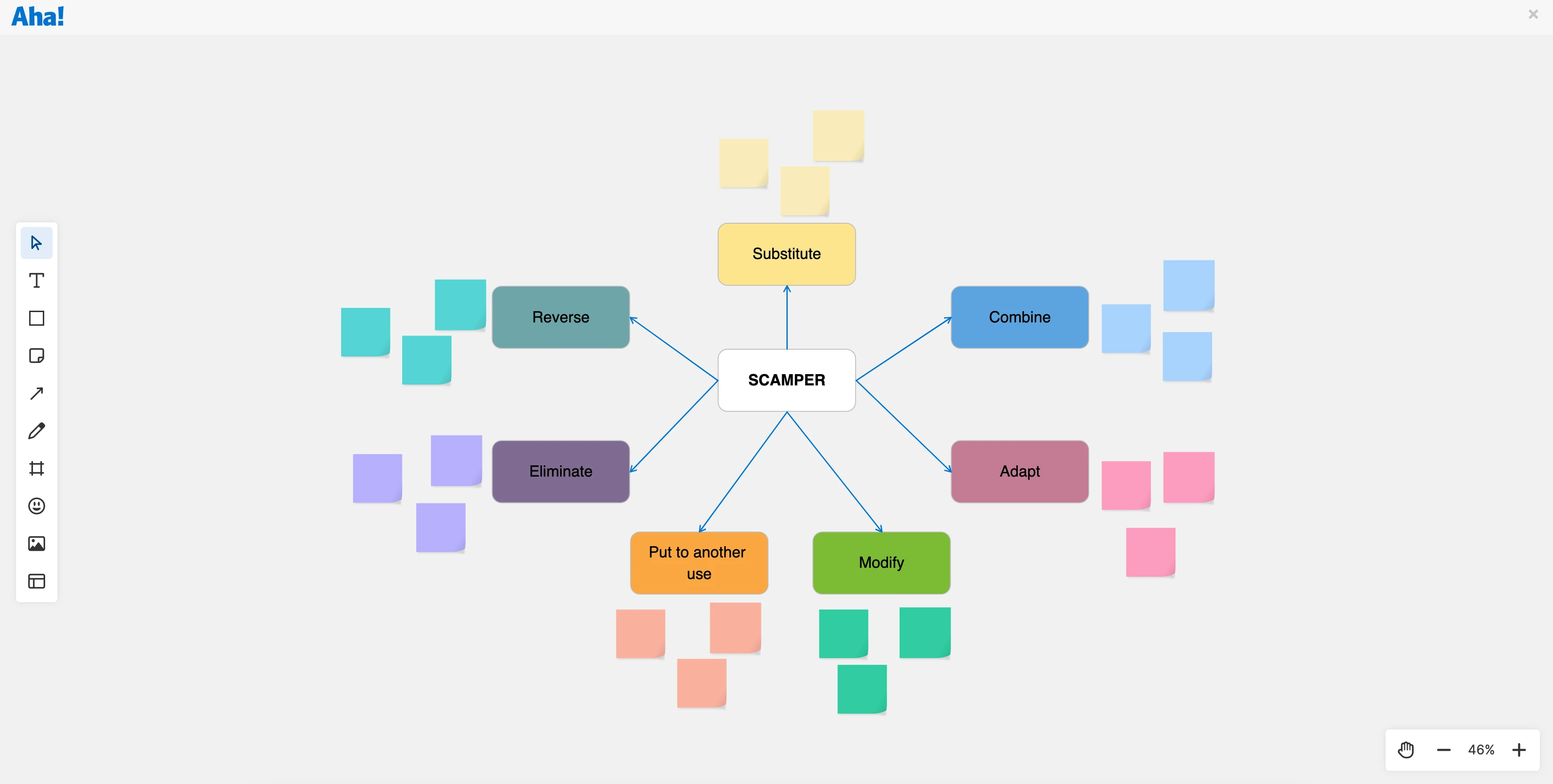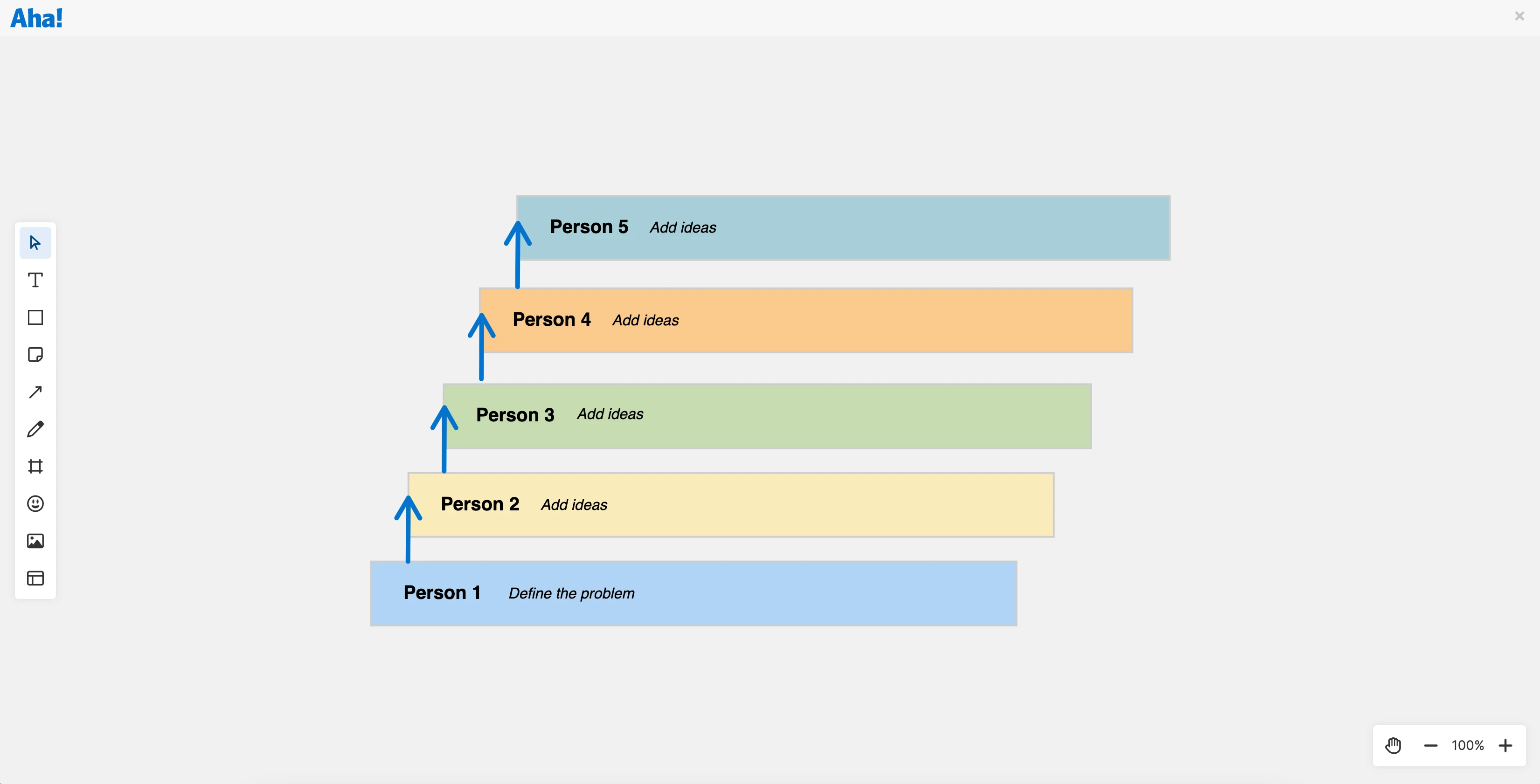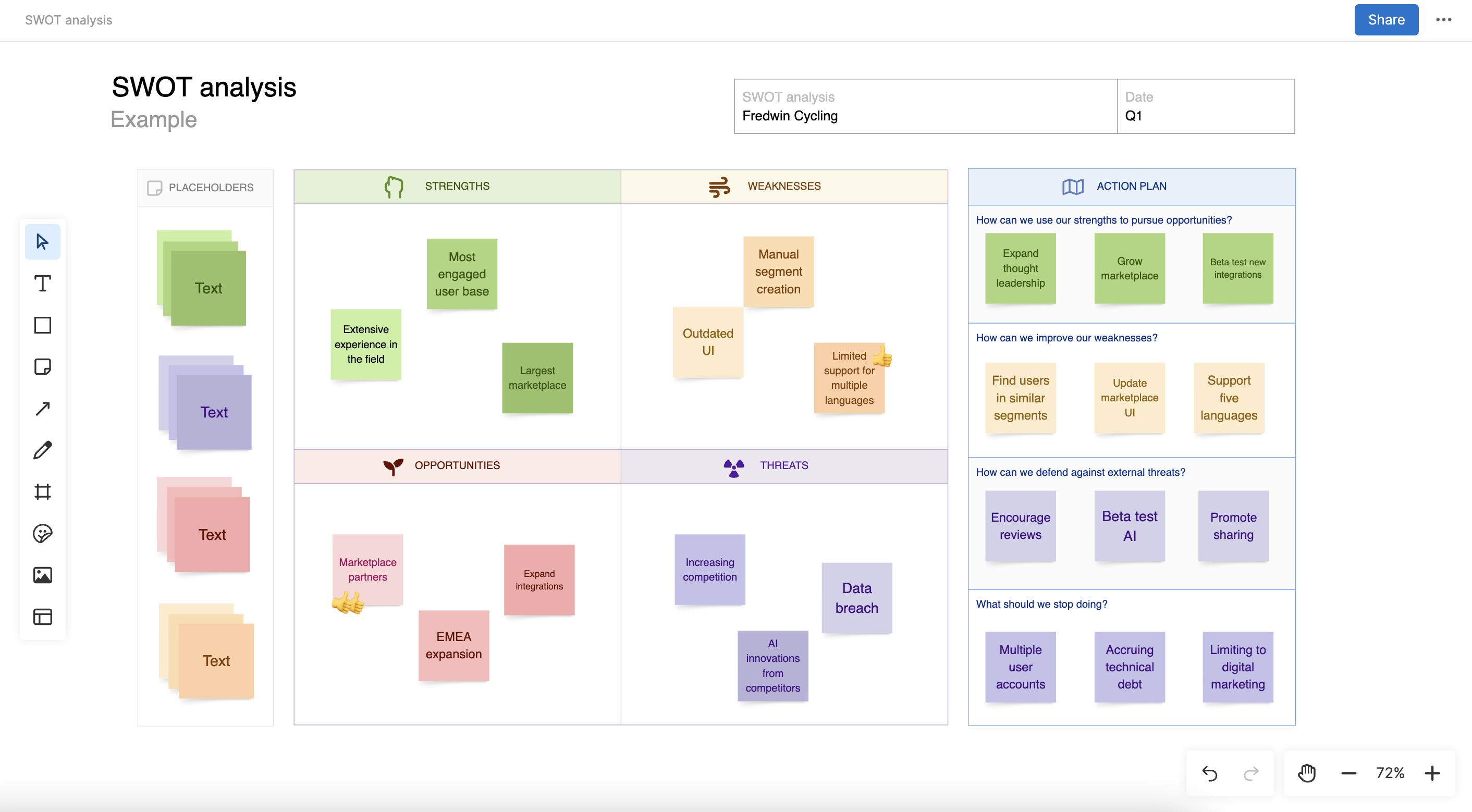Rapid ideation
Rapid ideation is about churning out as many ideas as you can within a set time limit. The goal is to capture high-level concepts without dampening creativity by thinking too long about any one idea. Your product team may also try rapid ideation when time is tight to spend on brainstorming activities.
Pick a time limit and use this pre-built brainstorming template for rapid ideation.
Reverse brainstorming
It is usually easier to spot problems than it is to find solutions. Reverse brainstorming plays into this by exploring what kinds of ideas could cause issues or lead to undesired results. This technique is useful for solving complex product problems like a major UX overhaul, for example. It forces you to consider what could go wrong — so you can be more confident in the solutions you choose.
We adjusted the brainstorming template with new headers, prompts, and an extra column.
Rolestorming
Rolestorming (also referred to as "figurestorming") entails brainstorming through the lens of a relevant public figure (e.g., “How would Steve Jobs fix this?”). You can also ask try rolestorming as the user or buyer personas that your product team has defined. This technique is helpful for when you are feeling stuck on stale concepts and could use some fresh perspectives.
Start with the brainstorming template and then adjust for rolestorming. For extra inspiration, insert an image of the public figure or persona you are emulating.
Round robin
When using the round robin technique, you start by brainstorming ideas as pairs or small groups. From there, participants will rotate between groups and build on the original ideas within a set amount of time. Round robin is an effective method for collaborative brainstorming — providing structure your team to fluidly build on each other's ideas and avoid groupthink.
Set up a simple grid with drag-and-drop shapes and sticky notes.
SCAMPER
SCAMPER is a brainstorming technique that uses an acronym to help you think critically about the ideas you produce. SCAMPER is particularly helpful for idea prioritization — requiring you to comb through every idea, embrace what will work, and cut what does not. SCAMPER stands for:
Substitute: Could we replace this idea with something else?
Combine: Can multiple ideas be merged into one?
Adapt: How can this idea be adjusted to support our objective?
Modify: How can we change this idea and build on it?
Put to another use: Can this idea help us solve other problems as well?
Eliminate: How can we simplify this idea?
Reverse: How can we rearrange the components of an idea?
We built this SCAMPER diagram with shapes and connectors.
Starbursting
This brainstorming technique uses a star-shaped diagram with "Who", "What", "Why," "Where," "When," and "How" on each point. Starbursting focuses on generating questions rather than solutions. It is most helpful for early product ideation and research, when you are determining strategic elements like product positioning.
Use a star shape to build a starbursting whiteboard.
Step ladder
Step ladder is a creative and collaborative approach to brainstorming. First, one team member will start by defining a problem. Another will add their ideas as the first "step." Then, another participant will join in to share their ideas for the third step, and so on — until you have reached four or five steps. This method is useful for integrating diverse perspectives and encouraging different folks to share unique solutions.
Responsive text boxes adjust as you go.
SWOT
SWOT analysis is a common planning tool for business strategy, but it can also be helpful for brainstorming as a product team. By examining strengths, weaknesses, opportunities, and threats, you can take a multi-faceted view of any problem. Getting the big picture can help you determine how to proceed.
Try the pre-built SWOT analysis template and adjust it to meet your needs.
Top
A quick brainstorming technique checklist
If you want to try a brainstorming technique in your next product team meeting, here is a quick checklist of helpful tips to feel prepared:
Get organized. Create and share an agenda for the meeting, choose a facilitator, and think about who to invite.
Set an objective. Think about what you want to achieve during the session — and how it supports your product goals. This is important for keeping the discussion fruitful and on-topic.
Choose a tool. You need a way to capture all of the ideas you generate. In-person brainstorming usually happens on a classic whiteboard — but digital whiteboards are ideal for remote or hybrid product teams and often come with built-in templates.
Pick a brainstorming technique. This guide has 12 examples of popular brainstorming techniques to try but of course many more exist. Depending on your objective, some will be more suited to your session than others. You will likely use one brainstorming technique per session but you can experiment with multiple.
Plan for action. After the brainstorming session has ended, what will you do with all the ideas you generate? How will you evaluate which ideas are most valuable — and which to cut? Make a plan for next steps and how you will incorporate the results of your brainstorm into future product plans.
Collaborate asynchronously or in real time on whiteboards in Aha! software and embed them directly in Aha! records. This way, ideation and brainstorming are connected to your daily work and serve as reminder to the team of the broader context behind the path forward you have chosen.
